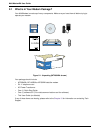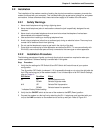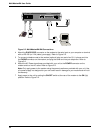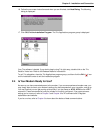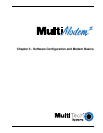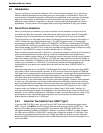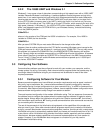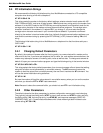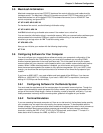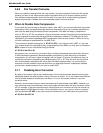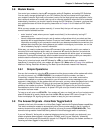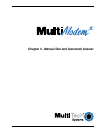
28
MultiModemBA User Guide
3.1 Introduction
Chapter 2 guided you through the installation of Trio communications software. If you are using a
different software package, there are some points you should take into consideration. Since your
communications software configuration is affected by the capabilities of your computer, this chapter
begins with a discussion of the limitations of some serial ports and how to identify them. It then
discusses communications configuration in general and recommends settings specifically for the
MultiModem. The last section of this chapter walks you through the basics of using your modem.
3.2 Serial Port Limitations
When you configure your software, you need to consider how the hardware on both ends of the
connection will affect the connection. Some serial ports, particularly those in older PC-compatible
computers, may limit the performance of the modem. You should know if yours is one of them.
The limiting factor is an integrated circuit called a Universal Asynchronous Receiver/Transmitter, or
UART. All data from your modem flows through it. The UARTs typically used in PC-compatible
computers are types 8250, 8250A, 16450, and 16550AFN. The 8250 is unreliable above 9,600 bps,
and the 8250A and 16450 are unreliable above 19,200 bps. If the modem sends data to the UARTs
above those speeds, the UARTs may not be able to process the data fast enough to keep from losing
some of it. The 16550AFN, however, can safely handle data to 115,200 bps.
When a modem communicates with V.42bis 4-to-1 compression enabled, it sends up to four times as
much uncompressed data to the serial port as it receives compressed over the telephone line.
Therefore, a modem communicating at 14,400 bps may require a serial port that can reliably transfer
data at four times 14,400 bps, or 57,600 bps; at 19,200 bps it may require one that works reliably up
to four times 19,200 bps, or 76,800 bps; and at 28,800 and 33,600 bps it may require one that works
reliably up to a maximum of 115,200 bps. If your serial port cannot handle these speeds, we
recommend that you replace your present serial card with one that has a 16550AFN UART or
equivalent.
Macintosh computers do not use UARTs. The Macintosh SE through IIfx models use a Zilog Z8530
chip called a Serial Communications Controller, or SCC, that has a maximum speed of 57,600 bps.
This speed can be compromised by other serial communications, including printer transmissions and
Appletalk, the networking software that allows Macintoshes to share files. When Appletalk is active it
controls all serial communications on the Macintosh. Because it gives priority to network
communications, it may lose modem data at higher transmission speeds. Therefore, when Appletalk
is active you risk losing data on serial port communications over 2400 bps, though most users can
work up to 9600 bps without problems. Other activities that could cause the serial driver to drop bits
at high speeds include the floppy disk driver formatting a disk, the CPU paging in or out in virtual
memory mode, and the Mac IIci or IIsi running the on-board video in 8-bit mode. Therefore, for
maximum communications speed on the Macintosh, we recommend as few concurrent activities as
possible. To use V.42bis compression at 19,200 bps or faster, we recommend that you install a high
speed serial port card. Newer Macintosh computers, such as the Quadra and Centris models,
support serial port speeds up to 115,200 bps.
3.2.1 How Can You Identify Your UART Type?
If you have MS-DOS 6.0 or later, you can find your UART type from a diagnostic program called
MSD. To use it, type MSD at the DOS prompt. After the opening screen, select COM Ports.... The
last line of the report tells you what type UART you have for each COM port. MSD does not
distinguish between the 8250 and the 8250A. However, if you have an IBM AT or newer computer,
you likely have an 8250A or 16450 UART installed, both of which are reliable to 19,200 bps. If you
would like more detailed information about your UART than MSD can provide, you can download
shareware UART identification programs from the IBM Communications Forum on CompuServe, or
from a local BBS.



